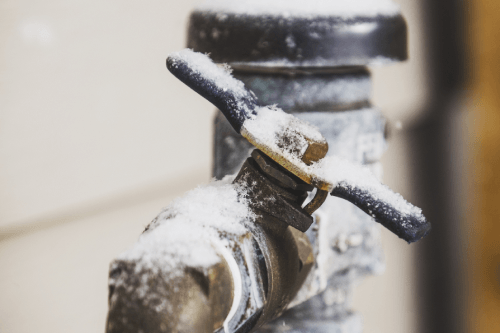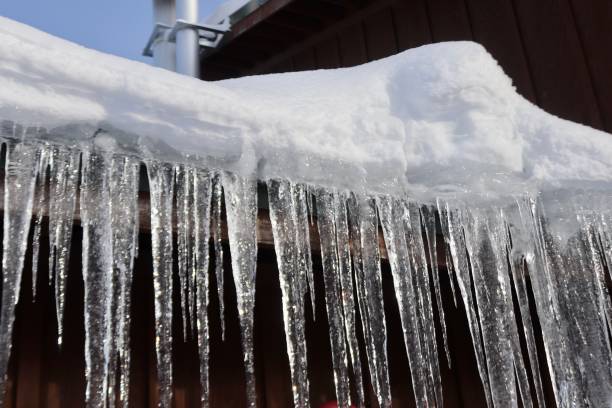Right here down the page you will find a lot of incredibly good guidance relating to Helpful Tips to Prevent Frozen Pipes this Winter.

Cold weather can wreak havoc on your pipes, specifically by freezing pipelines. Right here's exactly how to prevent it from happening and what to do if it does.
Intro
As temperature levels decrease, the risk of icy pipelines increases, possibly bring about expensive repairs and water damages. Comprehending how to stop frozen pipelines is essential for property owners in cold environments.
Recognizing Frozen Pipelines
What triggers pipelines to ice up?
Pipelines freeze when subjected to temperatures below 32 ° F (0 ° C) for expanded durations. As water inside the pipes ices up, it increases, taxing the pipe wall surfaces and potentially triggering them to break.
Risks and damages
Frozen pipelines can lead to water disruptions, property damage, and costly repair services. Ruptured pipelines can flooding homes and create extensive structural damages.
Indicators of Frozen Pipes
Identifying icy pipelines early can stop them from breaking.
Exactly how to identify frozen pipelines
Look for reduced water circulation from faucets, unusual smells or sounds from pipes, and visible frost on subjected pipelines.
Avoidance Tips
Insulating prone pipelines
Cover pipes in insulation sleeves or make use of warm tape to safeguard them from freezing temperatures. Concentrate on pipes in unheated or exterior locations of the home.
Heating strategies
Maintain interior areas sufficiently heated, specifically areas with pipes. Open closet doors to allow cozy air to distribute around pipelines under sinks.
Safeguarding Outdoor Plumbing
Garden hose pipes and outdoor faucets
Detach and drain yard hoses prior to winter months. Mount frost-proof spigots or cover outdoor taps with insulated caps.
What to Do If Your Pipes Freeze
Immediate actions to take
If you think frozen pipes, keep faucets available to soothe stress as the ice thaws. Utilize a hairdryer or towels soaked in hot water to thaw pipes gradually.
Long-Term Solutions
Architectural changes
Take into consideration rerouting pipes away from outside wall surfaces or unheated areas. Include extra insulation to attics, cellars, and crawl spaces.
Updating insulation
Invest in high-grade insulation for pipes, attics, and walls. Appropriate insulation aids maintain consistent temperatures and minimizes the threat of icy pipelines.
Conclusion
Avoiding frozen pipes requires positive steps and quick reactions. By understanding the reasons, indications, and safety nets, homeowners can secure their plumbing throughout cold weather.
5 Ways to Prevent Frozen Pipes
Drain Outdoor Faucets and Disconnect Hoses
First, close the shut-off valve that controls the flow of water in the pipe to your outdoor faucet. Then, head outside to disconnect and drain your hose and open the outdoor faucet to allow the water to completely drain out of the line. Turn off the faucet when done. Finally, head back to the shut-off valve and drain the remaining water inside the pipe into a bucket or container. Additionally, if you have a home irrigation system, you should consider hiring an expert to clear the system of water each year.
Insulate Pipes
One of the best and most cost-effective methods for preventing frozen water pipes is to wrap your pipes with insulation. This is especially important for areas in your home that aren’t exposed to heat, such as an attic. We suggest using foam sleeves, which can typically be found at your local hardware store.
Keep Heat Running at 65
Your pipes are located inside your walls, and the temperature there is much colder than the rest of the house. To prevent your pipes from freezing, The Insurance Information Institute suggests that you keep your home heated to at least 65 degrees, even when traveling. You may want to invest in smart devices that can keep an eye on the temperature in your home while you’re away.
Leave Water Dripping
Moving water — even a small trickle — can prevent ice from forming inside your pipes. When freezing temps are imminent, start a drip of water from all faucets that serve exposed pipes. Leaving a few faucets running will also help relieve pressure inside the pipes and help prevent a rupture if the water inside freezes.
Open Cupboard Doors
Warm your kitchen and bathroom pipes by opening cupboards and vanities. You should also leave your interior doors ajar to help warm air circulate evenly throughout your home.

I'm certainly very fascinated with How to prepare your home plumbing for winter weather and I'm hoping you enjoyed reading our blog entry. Are you aware of another individual who is in to How to Prevent Your Pipes From Freezing? Take a moment to promote it. Thanks a bunch for being here. Kindly stop by our blog back soon.
Click Here
Comments on “Avoid Frozen Pipes in Winter: Professional Tips”